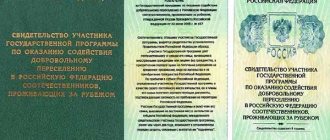The status of a low-income family gives its members a certain list of privileges. Obtaining the status in question is not easy; you need to meet certain requirements. In 2021, these requirements include a certain level of monthly income. It should be low enough that people cannot provide for themselves normally. Only then will they apply for the low-income version of the position. When a family has a fairly high income, in 2021 the state will not finance it, give benefits or support it in other ways. Considering that low-income status is not uncommon in modern Russia, many are interested in how to apply for it and when this public service can be provided. And today we will also deal with the papers that support low-income status.
When can you apply for low-income status and how to get it?
Obtaining the status of a low-income family is a state procedure that can only be completed by people who really have reasons for the status and are ready to prove it. The low-income form allows you to receive social support from the state. It is especially necessary if the income is not enough to support the family. But in 2021, safety net will be provided only to those citizens who are having the hardest time. For example, disabled people, seriously ill people, temporarily unemployed or large families.
True, the state is responsible only for ensuring the minimum subsistence level. Beneficiaries must earn the remaining funds for a comfortable life themselves. If a person simply does not work because he is lazy, the state will not provide him with any financial support.
Trying to infiltrate the status of the poor is permissible if the total income of all its members, divided by the number of people participating in the registration, is less than the current subsistence level. If the calculation gives such results, there is no need to delay. Contact the social protection department at your place of registration.
Moreover, financial support can be received not only by able-bodied citizens, but also by minor children and people of retirement age. In some cases, students who are under 23 years of age may receive payments. In addition, the state provides social assistance to parents who care for minor children. Families that include disabled people also receive assistance from the state.
What families can qualify for low-income status?
Before figuring out how to obtain the status of a low-income family in 2021, you should clarify who is part of the family in question. This is important because it determines whose income is taken into account when drawing up an application, and whose documents are taken into account. Family composition means those persons who live under the same roof, are related by blood or documents and have a common budget. That is, they run a joint household, not only have a common income, but also jointly bear expenses.
If we talk about a specific circle of people considered relatives (according to the state) and capable of obtaining a position, then this includes spouses whose marriage is officially registered, their children (natural or adopted, stepdaughters and stepsons), parents (grandparents), brothers and sisters. But only if they meet the family criteria listed above.
If we talk about people who are actually family members, but will not be taken into account when determining low-income status, then in 2021 they include people who are in prison or undergoing military service in the army. This category also includes people who were sent for compulsory treatment by court decision and citizens who are already fully supported by the state.
There are certain situations when people who are strangers by law live together and lead a common life. Social services may consider their case separately. There is also a chance that such a “family” will be recognized as low-income under a separate procedure.
Package of documents for status assignment
A detailed list of documents is specified in Decree of the Government of the Russian Federation dated July 20, 2003 No. 512.
To assign status, you need to contact your local social security office with the following package of documents:
- Main package:
- passports of everyone registered in the apartment and leading a joint household;
- birth certificates of young children;
- certificate of family composition (extract from the house register, extract from the apartment card. If some family members are registered separately, then certificates of family composition must be provided at all addresses);
- all income data (according to the algorithm described above);
- account details where the benefits will be transferred.
- Additional package:
- pensioners provide a copy of the work book (along with the original);
- private entrepreneurs, in addition to the work book, are required to submit an income declaration;
- You may need a certificate of divorce, a certificate of marriage, a certificate of change of name, a certificate of paternity.
Download for viewing and printing
Decree of the Government of the Russian Federation of July 20, 2003 N-512
Procedure for assigning status
You must fill out an application at your local Department of Social Security office. The above package of documents is attached to it. The specialist carefully reviews everything, checks it with the originals (you need to have them with you, or provide documents certified accordingly).
The decision to assign status is made within 10 days.
This time is needed for:
- processing the application;
- checking data for accuracy;
- entering them into the database.
The response is sent to the family in writing.
If the application is filled out with errors or is illegible, it may be rejected. Download to view and print
Sample Application for Recognition of a Low-Income Family
Reasons for refusal
As a rule, the specialist already at the reception sees errors, missing or incorrectly completed documents, identifies large incomes, and the like. That is, a person is warned in advance that he will not be given low-income status.
However, there are cases of official refusal. The reasons for receiving it may be:
- providing false information;
- erroneous data in income certificates;
- incorrectly executed documents, certificates;
- expired documents;
- absence of original documents when submitting a package of documents;
- negligence in writing the application.
If a citizen is sure that his family is low-income, if he receives a refusal, he should contact the government agency again. The most difficult situations are resolved in court.
Low-income family income
Before applying for the status of a low-income family, you need to understand the income on the basis of which the status in question will be presented. Many people simply do not know exactly what income needs to be taken into account in order to qualify as a low-income family. Also, a problem may arise due to the fact that you indicate inappropriate income. Avoiding mistakes is actually quite simple. You need to focus on the laws that are relevant in 2021. In particular, to Article 14 of Federal Law No. 44.
Calculation of income for benefits must be carried out based on the profit that a person has received over the past three months before submitting a document for low-income status. The calculated amount must include the following types of income:
- all payments that are offered as compensation for employees (this includes salaries, bonuses and other financial incentives from the employer);
- average statistical earnings, which is maintained in some cases, as provided for by current law;
- various compensations from the state and not only for the fact that a person fulfilled social and other types of obligations;
- severance benefit type;
- various payments of social significance (benefits, scholarships, child support, benefits for the unemployed, compensation, insurance payments, pensions, payments for the lifelong maintenance of individual employees, various additional payments, etc.);
- income from property (for example, if the apartment is rented out);
- other types of income (one-time benefits, financial assistance, royalties, money received from business, alimony, gifts, inheritance, etc.).
There are incomes that are actually available, but they do not need to be taken into account when calculating in 2021, otherwise the government service will not be received. Such income may include social assistance from the state, some types of insurance payments (including one-time payments, which are paid as compensation for damage caused or to undergo rehabilitation). In addition, the amount taken into account is calculated without deducting various fees and taxes. The amount that someone must pay for child support to another family is also calculated.
Living wage for the poor
Since the cost of living is one of the most important units for determining whether a family has the right to be considered low-income, special attention should be paid to determining the current cost of living.
It's easy to calculate - add up the income of all family members for three months, and divide the resulting amount by three. Next, divide the number by the number of people in your family. Compare the amount received with the cost of living adopted for 2021. If the amount is less than declared by the state, you can register the status of a low-income family and qualify for benefits.
At the moment, Russia has its own standards of living wage for different categories with the status of low-income people. Receiving benefits is possible if the figure is below the indicated limits:
| If the income of one adult is calculated | 11653 rubles |
| If a person is able to work | 12702 rubles |
| Acceptable minimum for pensioners. | 10022 rubles |
| Minimum for a child | 11303 rubles |
What documents do you need to collect to obtain low-income family status?
In order to receive government services and low-income status in 2021, the first thing you need to do is collect documents for the status of a low-income family. The list of necessary items includes certificates confirming the full composition of the family that wants to receive assistance from the state. To confirm the general financial level of the family in question, you need to collect a folder of income certificates for each family member who receives any type of income. Including pensions and scholarships. The certificate must take into account the income of each family member for the last three months before submission.
If there are young children in the family, you need to put their birth certificates in the folder. Able-bodied citizens will have to show their work records, and if the person is unemployed, bring a certificate from the employment center. In addition, you will need a taxpayer identification code, a marriage certificate for the spouses, an INN and documents to confirm the identity of the spouses. If one of the family members has a disability, you must bring a certificate from ITU confirming the status in question.
Also in 2021, attention is paid to the overall financial condition of the family and the availability of property. For example, you need to bring documents for an apartment or house that is owned by members of the family in question, an occupancy agreement (provided that not only this family lives in the apartment), as well as details of savings books or bank cards.
Sometimes the list of documents may change, so if you are trying to obtain low-income status in 2021, you should check the current list of required documents. This can be done at your local social security office . For example, if one of the family members is in prison, in the army or in a closed clinic, you need to take a certificate from these places. If someone is considered missing, a certificate about this is also needed. Without them, obtaining status will be impossible.
But the main document is an application for registration of status. You can compile it based on the sample in question:
You can bring the completed folder of documents to the same social security department where the government service in question is processed. The workers will check them, and if everything is fine, the folder will be handed over to the commission, where they can issue the document. Please note that all documents must contain accurate data. Even if the status is formalized and assistance is provided to the family, detected fraudulent actions will lead to the fact that all support provided will have to be returned to the state.
The commission reviews documents within 10 working days. If the check confirms your low-income status, it will be formalized with all that it entails. Including social support. In some cases, the review may take longer, but not longer than a month. Since each document must be studied in detail for the fact of forgery.
General principle for assigning status
State bodies in their activities are based on the legislative framework. This means strict limits, beyond which specialists are strictly prohibited.
In our case, they are guided by Federal Law No. 44 of 04/05/2003 and the following concepts:
- family and its composition;
- property owned by the family;
- average family income.
A family whose income per person is below the subsistence level in the region receives low-income status. You can calculate and compare these indicators yourself.
To make a decision, the government agency requires all the information about the family and its income. That is, the applicant is obliged to collect and provide it. Then no problems will arise.
Who is included in the family
The first confusion among citizens arises when they need to decide on the composition of their family.
It's actually simple. A family is a group of persons related by kinship or property. The family must meet the following criteria:
- live together (meaning registration);
- conduct general farming;
- share income and expenses.
A family may include those living in the same apartment (room, house):
- spouses;
- children of spouses;
- parents of spouses;
- adoptive parents and adopted children;
- brothers and sisters;
- stepsons and stepdaughters.
At the same time, when determining the status of a low-income family, the following persons are not included:
- military personnel undergoing military service upon conscription;
- persons serving a sentence of imprisonment, in custody;
- persons undergoing compulsory treatment by court decision;
- persons who are fully supported by the state.
There are cases when a joint household is run by completely strangers (by law) citizens registered in the same premises. This is not a reason for not recognizing them as a family. Experts will analyze each nuance separately.
What is included in income
The next stage raises even more questions among people. Many, due to a misunderstanding of the structure of income required for presentation to the government agency, lose the benefits of a low-income family.
In fact, this is also not difficult to figure out. The calculation procedure is specified in Article 14 of Federal Law No. 44 “On the procedure for recording income and calculating the average per capita income of a family and the income of a citizen living alone for recognizing them as low-income and providing them with state social assistance.”
The rules for calculating income are as follows:
- The amounts received by all family members over the last three months to the date of application are taken.
- Income includes:
- All monetary payments provided for by the remuneration system;
- Average earnings maintained in cases provided for by law;
- Compensations paid for the performance of state and public duties from such bodies;
- Severance pay;
- Social payments from budgets of all levels (pensions, scholarships, benefits provided by kindergartens, unemployment benefits, lifelong maintenance of judges, benefits, compensation, insurance payments, allowances and surcharges);
- Income from property owned by the family;
- Other income (monetary allowances for military personnel, employees of internal affairs bodies and similar bodies, one-time benefits upon dismissal from service, payment for work under contracts, financial assistance, royalties, income from business activities, income from shares, alimony, income from bank deposits, inheritance and present).
It is worth pointing out that family income does not take into account:
- State social assistance;
- One-time insurance payments made to compensate for damage or related to rehabilitation.
It should be clarified that the amount of income is taken into account before taxes and fees are deducted.
Important! The amount of alimony paid by one of the family members is deducted from the family income. Download to view and print
Federal Law of April 5, 2003 No. 44-FZ
Nuances of income information
Unfortunately, when registering the status of a low-income family, many nuances arise. Let us list the most common options for accidentally “concealing” profits, occurring out of ignorance:
- The employer is obliged to issue the employee applying for status a certificate, which includes the amounts without deduction of taxes. This can be a certificate in form 2-NDFL or a certificate in free form, but must be signed by the head and chief accountant of the organization.
- Information about all property owned by family members must be submitted. Namely:
- Real estate (land plots, houses, apartments, cottages, garages);
- Transport and other mechanical means;
- Means for storing and processing products.
- Divorced parents raising children are required to show receipt (absence) of alimony.
- In schools, children are sometimes provided with discounted breakfasts or other benefits (even small ones). This is also included in income. A certificate from an educational institution is required. The same should be done if the child attends a preschool institution, an educational institution of secondary or higher vocational education.
- Family income also includes the amount of income from the rental of real estate and other property, income received from the sale of fruits and products of personal subsidiary plots.
All information is verified by sending an interdepartmental request. Failure to provide information leads to refusal to assign status.
Algorithm for calculating average income per person
When you have collected all the certificates, you can calculate your income.
- To do this, you need to add up the totals from each document.
- The resulting number should be divided by three (according to the number of months of data collection).
- This number must be divided by the number of family members.
- As a result, we get the average income per person.
- It is compared with the cost of living in the region established by the relevant government.
- If the income is less, then acquiring the status of a low-income family is likely.
Only a specialist will make an accurate calculation, since the cost of living is set separately for each category of citizens:
- able-bodied;
- children;
- pensioners and others.
Example of calculating average income
Let’s say a family living in Moscow applied for low-income status. The composition of this social unit:
- mother looks after children two and five years old (has the right not to work);
- dad works;
- grandmother is a pensioner.
The appeal occurred on February 17, 2017.
Income is taken for the period:
- November 2016;
- December 2016;
- January 2021.
The resulting amounts were:
- dad - 90 thousand rubles in 3 months;
- grandmother - 45 thousand rubles. for the same period.
Calculation: (90 thousand rubles + 45 thousand rubles) / 3 / 5 = 9 thousand rubles. for one person.
The cost of living in the capital (latest figure) is 15,307 thousand rubles, therefore, the family is considered low-income.
If an able-bodied person does not have a job without a good reason and has not applied for unemployed status, then the family will be denied recognition as low-income.
What benefits and benefits can a low-income family claim?
If we were able to figure out a little how to obtain the status of a low-income family, let's talk about what benefits people with the status in question can claim. Low-income families can receive a whole list of useful benefits and benefits. For example, low-income families can count on a special child benefit, which is issued every month. Separately, low-income families are entitled to a monthly cash payment for children 3-7 years old. Children can also be sent to a short-term stay group.
Housing problems will also be partially solved, since low-income families can count on a subsidy, which must be spent on covering utility bills. The state also helps low-income families get better housing or improve their existing property.
Students receive a social scholarship from the state, and guests of Crimea, Krasnodar, Altai and Stavropol Territories do not have to pay a resort fee. Not to mention the fact that the persons in question are receiving significant material, clothing and food assistance from the state in 2021. And for some time now, families with this status are entitled to free legal advice.
For example, to receive food assistance, you need to have a special document - a notification from social workers. For owners of social media Muscovite cards; an electronic food certificate is produced. There are two thousand points on your balance, which are equivalent to the same number of rubles. They can be spent on purchasing groceries in some Moscow stores. If you don’t have a social card, you can also apply for a benefit. Only in this case, you don’t need to look for stores yourself. You can immediately receive a food package for the prescribed amount.
Also, in 2021, a low-income citizen can receive clothing assistance, that is, clothes, shoes, etc. Typically, such support is intended for senior citizens, the disabled, and families with children. In addition, assistance may be intended for the purchase of durable goods. In particular, for the purchase of such necessary household appliances as a refrigerator. Addressed social assistance for families with children, provides the opportunity to buy children's goods using accumulated points. If citizens do not have a social card, they will not be left without help. Just to get it, you will have to contact your local social service center.
A separate category of social assistance is a monthly allowance for children in low-income families. You can get it for each child until he turns 18 years old. To receive it, you need to submit an application. Both parents and guardians of the child can do this. Increased benefits will be received by single parents, the parents of a child for whom the second parent does not pay child support (evades them), the parent of a child whose second parent is a military serviceman (sergeant, sergeant major, soldiers and cadets). But families cannot simultaneously receive payments for children 3-7 years old and benefits as low-income people.
What can you expect?
A low-income family has the right to count on receiving a number of benefits from the state, including special child benefits, which are provided from the moment the child is born or adopted.
The size and number of payments are always determined at the level of regional legislation based on the level of the demographic situation in the region where the low-income family lives.
Today, among the main child benefits that a family raising one or more minor children can apply for, the following should be considered:
- "Governor's" payments , which are monthly and quarterly benefits until the child for whom they are paid reaches the age of sixteen. The amount of this benefit is set at the level of a particular region and is not subject to federal regulation.
- One-time payment at the birth of a child . It is paid regardless of which child is born in the family. Its size is established in each region based on the subsistence level established for children in the region of residence of a low-income family.
- Monthly payment for the third and subsequent children . This type of payment is provided only for low-income and large families that have confirmed their status from a legal point of view. The payment is equal to the cost of living per child established for the previous quarter in the region. If the subsistence level has been indexed, the child benefit is also indexed so that it does not fall below the established subsistence level. The payment is made until the child reaches the age of sixteen, and if the child is a full-time student at a university, it is extended to twenty-three years.
- Child care benefit until such a child reaches the age of one and a half years . The amount of such benefits is established in the form of forty percent of the parent’s average earnings for two years or based on the established amount for such benefits at the level of regional legislation. Depending on the number of children, the benefit amount will vary. It is subject to annual indexation.
Registration of all these benefits takes place either in the social protection authorities or at the place of work of the parent who decided to receive child benefits (if both parents are employed, then they must make a decision on who will receive these benefits jointly for further submission of all necessary documents).










